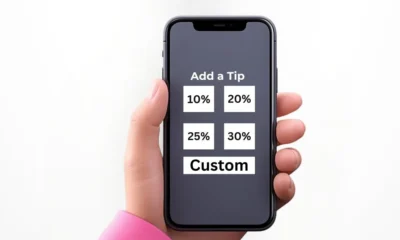HEALTH AND FITNESS
Understanding the Costs and Funding for NDIS Plan Management

It’s easy to get lost within the National Disability Insurance Scheme (NDIS), particularly the management of your funds. NDIS Plan Managers are important in the administration of participants’ budgets and payments. But what does NDIS Plan Management cost, and how is it funded? This guide explains the costs and the funding available for NDIS Plan Management, so you’ll have a clear idea of the breakdown.
What is NDIS Plan Management?
NDIS Plan Management is a service that helps NDIS participants with the financial parts of their plan. A Plan Manager will handle budgeting, payment of service providers, record-keeping, and monitoring for compliance with NDIS rules. This frees up participants to have more flexibility and control over their money without worrying about invoices and payments.
Is There a Fee for NDIS Plan Management?
Yes, there is a cost involved in employing an NDIS Plan Manager. But the positive aspect is that NDIS subsidizes the cost under a different budget line category. Therefore, participants do not have to pay out-of-pocket for these services.
The NDIS charges fixed prices for Plan Management services, which can include:
- Initial Setup Fee – An upfront fee to set up Plan Management services.
- Ongoing Monthly Fees – An ongoing charge that includes invoice processing, budgeting, and financial reporting.
These fees are set by the NDIS Price Guide and are reviewed each year.
How is NDIS Plan Management Funded?
The cost of Plan Management services is fully funded under the NDIS, provided the participant selects this option in their plan. The funding falls under the Improved Life Choices category, which is separate from other support budgets such as Core Supports or Capacity Building.
When a participant requests Plan Management, the NDIS allocates specific funding for these services. This ensures that your support budget remains intact for other necessary services.
Comparing NDIS Plan Management with Other Alternatives
NDIS participants have three primary choices for managing their funds:
- Self-Managed – Participants manage their own money by paying providers and keeping records of expenses. Although this choice provides flexibility, it involves a lot of time and effort.
- Plan-Managed (With an NDIS Plan Manager) – A trained Plan Manager manages payments, budgeting, and record-keeping on the participant’s behalf. This choice offers financial independence without administrative hassle.
- NDIS-Managed (Agency-Managed) – The NDIS pays registered providers directly, but participants are less flexible when it comes to choosing service providers since they can only hire NDIS-registered businesses.
Advantages of Selecting an NDIS Plan Manager
Selecting NDIS Plan Management has the following benefits:
- No Extra Charge to You – As Plan Management is entirely covered by the NDIS, participants do not have to pay any additional charges.
- More Choice and Control – In contrast to NDIS-managed plans, Plan Management has participants select both registered and non-registered providers.
- Financial Sophistication – Plan Managers guarantee timely payments and monitor costs to maintain budgets.
- Lower Administrative Burden – Participants can concentrate on personal aims rather than paperwork and invoices.
How to Obtain Funding for NDIS Plan Management?
In order to access funding for NDIS Plan Management, you need to ask for it during your NDIS planning meeting. You can say that you would like to have Plan Management included under your Improved Life Choices budget. When approved, the NDIS will provide specific funds for these services so that you can hire an NDIS Plan Manager without touching other parts of your budget.
If your current plan does not have wee Plan Management, you can arrange a review of your plan to include this support. Your NDIS Planner or Local Area Coordinator (LAC) can assist you in doing so.
Key Takeaways
- NDIS Plan Management is entirely funded by the NDIS through the Improved Life Choices budget.
- There are no out-of-pocket costs for participants with a choice of Plan Management.
- NDIS fixes standard rates for Plan Management services, which include an initial setup fee and monthly management charges.
- Plan Management is more convenient and flexible than NDIS-managed plans.
- Participants need to apply for Plan Management in their planning meeting or through a review of their plan
Final Thoughts
It is important to understand the costs and funding of NDIS Plan Management in order to make informed decisions regarding your NDIS plan. As Plan Management is completely funded, participants can enjoy expert financial management without any extra cost. With an NDIS Plan Manager, you achieve financial freedom, flexibility in provider choice, and peace of mind that your funds are being well managed.
If you are thinking about NDIS Plan Management, talk to your NDIS Planner or a registered Plan Manager to discuss your options and arrange to have your funding set up to suit your requirements.
-

 BIOGRAPHY7 months ago
BIOGRAPHY7 months agoBehind the Scenes with Sandra Orlow: An Exclusive Interview
-

 HOME1 year ago
HOME1 year agoDiscovering Insights: A Deep Dive into the //vital-mag.net blog
-

 HOME1 year ago
HOME1 year agoSifangds in Action: Real-Life Applications and Success Stories
-

 BIOGRAPHY1 year ago
BIOGRAPHY1 year agoThe Woman Behind the Comedian: Meet Andrew Santino Wife




























